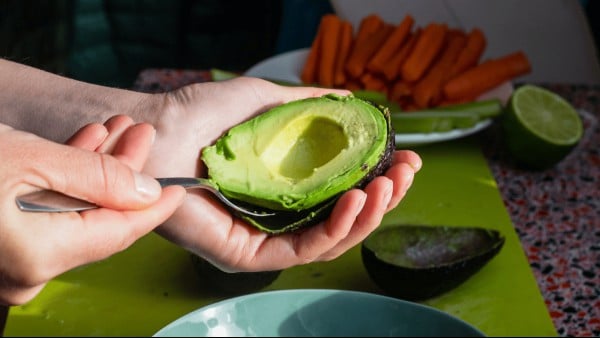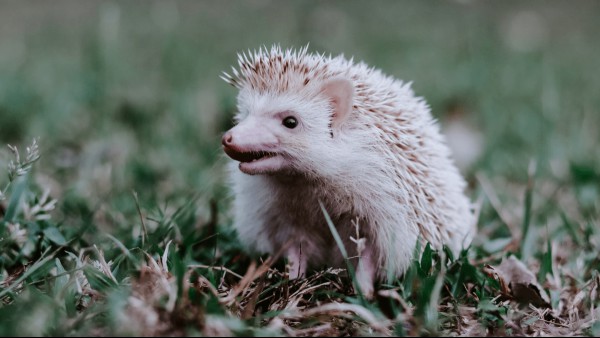Somewhere in between being named after testicles by the Aztecs and becoming a symbol of millennial decadence in the 2010s, the avocado transcended its own literal identity. Still a crowd-pleasing source of healthy fat, but also so much more in terms of sheer cultural iconography, avocado seems to be in the air, or at least part of a certain zeitgeist. In the great anthology of avocado history, which might seem like a straightforward account of how a crop became a global commodity, there is also a story of the various appetites that encouraged its proliferation.
Consistently, though, various cultures throughout time have recognized the avocado as a symbol of richness and abundance. It might inspire you to know that this wasn’t always interpreted as “charging extra for guac,” either. Here’s a condensed history of how the avocado made its way into burritos and hearts all over the world.
Early Avocado History
It’s not known for certain when and where the avocado first originated on Earth, but conditions for avocado cultivation were in place as far back as 16,000 BCE. One theory is that the avocado originated in Africa and later landed in Central America. Another is that it originated in southern central Mexico. It then likely spread through prehistoric mammoths who would eat the fruit whole and then poop out the seeds after traveling long distances.
Regardless of where the fruit first originated, it’s pretty clear that its cultivation by humans began in Mexico and Central America. There, it entered the cultural lore of pre-Columbian civilizations like the Caral, Mokaya and Maya peoples. The fruit was apparently pretty iconic from the get-go. The 14th month of the Maya calendar was represented by the avocado glyph, and it also appeared in Aztec paintings and on Mayan tombs.
Evidence of domesticated avocado crops have been found in Peru dating back to 750 BCE. By 500 BCE, the avocado was known as ahuacatl to the Aztecs, which was actually just the Nahuatl word for “testicle” — apparently a cheeky nod to the fact that they grow in pairs and were thought to be an aphrodisiac, or a source of strength and/or fertility to whoever consumed it. Not only was the avocado an important source of sustenance for indigenous Mesoamerican civilizations, but it was also believed to possess such mythological powers.
The Avocado’s Californication
When Spanish colonizers came to the continent, they adapted the name to aguacate, which was easier for them to pronounce. At this point, the avocado had gained a foothold through Central America and parts of South America, and the Spanish began exporting it to Europe, too.
The earliest documented instance of the English version of this word, “avocado,” dates back to 1696. Apparently, English speakers even flirted with referring to it as an “avocado pear,” which was alternatively referred to as an “alligator pear” (because, well, look at it, you know?).
The crop was eventually introduced to Indonesia, Brazil, the Levant, South Africa, Australia and, crucially, California, throughout the 19th century. When it got to California, farmers decided it was time for a rebrand. Neither “testicles” nor “alligator pear” seemed like very appealing namesakes, so they settled simply on “avocado.” This was also around the time when the California Avocado Society began advertising them in The New Yorker and Vogue, branding avocados as “the aristocrat of salad fruits.” This is almost certainly when avocados first became cemented in the public imagination as a luxury food, and an interesting distortion of its status in indigenous societies as a source of strength and fertility.
In 1926, Rudolph Hass bought some seedlings and began to grow avocado trees at his home in Los Angeles County. Partially by accident and after some experimental attempts to graft an existing variety onto it, one unattended tree began to produce avocado fruit with a unique taste. Hass’ children noticed how good this tree’s fruit tasted, and he soon began propagating more of them.
The Hass variety, with its bumpy black skin, differed from the prevailing Fuerte avocado, which had smooth green skin. But it also turned out that the Hass variety was easier to propagate, had a longer harvest season, and could start producing a healthy amount of fruit by the second or third year. The thicker skin also made it hardier when it came to enduring long shipping journeys.
In many ways, the invention of the Hass variety was probably a key turning point in avocado history, or at least on the road to its global takeover. Rudolph Hass patented this variety in 1935, and it became the leading variety in California in the late 1970s. Today, California is the largest producer of avocados in the United States — to the tune of 90 percent of the nation’s crop. About 95 percent of the avocados grown in California, and 80 percent of the avocados consumed worldwide, are Hass avocados.
Avocado Toast, Avocado Lattes And Beyond
In the United States, avocados began to gain popularity outside of California, Florida and Hawaii at the end of the 20th century, which paved the way for the cultural explosion that would follow in the 2000s and 2010s. Between 2000 and 2015, the number of avocados sold in the U.S. quadrupled, according to the Hass Avocado Board. One of the ways this happened? Avocado farmers promoting guacamole as a Super Bowl Sunday staple throughout the 1990s.
A wave of innovation was imminent, however. The nutty, buttery goodness of the avocado proved to be a decadent addition to not just various beloved Mexican staples, but also salads, salad dressings, smoothies, desserts, frozen treats and as a vegan substitute for butter. In a made-for-Instagram twist that probably marked the moment that the avocado craze officially jumped the shark, an Australian cafe began serving lattes inside of scooped out avocado husks in 2017. Supposedly, this started as satire. But then again, it didn’t sell too poorly.
Last but not least, maybe thanks in large part to Gwyneth Paltrow, avocado toast became all the rage in the 2010s. It also became an ironic shorthand for the supposed reasons why millennials couldn’t afford to buy homes and, by extension, the generational standoff between millennials and boomers. This all started when millionaire Tim Gurner was quoted in a 60 Minutes episode as saying, “When I was trying to buy my first home, I wasn’t buying smashed avocado for $19 and four coffees at $4 each.”
As much as this comment invited a lot of rightful scorn, the avocado has, at this point, become a symbol not only of richness, of decadence and of health, but also of excess. The global avocado industry has grown so large that it’s become a deforestation threat in Mexico, particularly in cases where wild avocado trees are being cut down in favor of Hass trees. While the Hass is obviously better-suited for the global supply chain, the lack of genetic diversity also makes the crop more vulnerable to pests and diseases. That’s not even mentioning the vast amount of water required to grow avocado trees.
Despite its less-than-stellar environmental scorecard in the current global economy, there’s still much to appreciate about this fatty fruit and the way it has captured the imagination of so many disparate cultures. Throughout time, and all around the world, to know the avocado has been to love the avocado.











